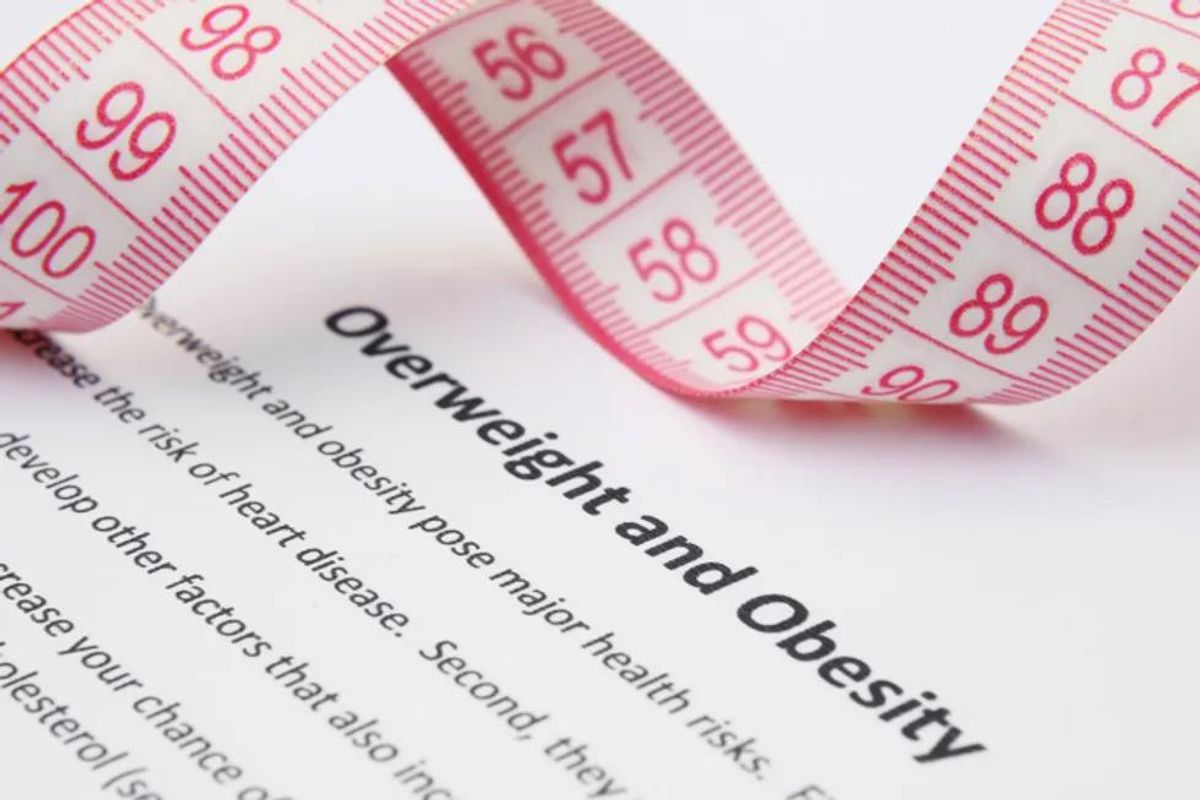

Learn about our editorial policies
Medically Reviewed
This article has been archived. We will no longer be updating it. For our most up-to-date information, please visit our obesity information here.
The Centers for Disease Control and Prevention reports that 32 percent of American women 20 years of age and older are considered obese. What's the difference between being obese and being overweight? The defining characteristic in both overweight and obese people is excess body fat. The difference is a matter of degree.
It's important to talk to your health care professional about the right weight for you. He or she can help you figure out what is healthy for you, and assess your risk for obesity.
One measure of obesity is your body mass index (BMI), which is a simple method you can do at home. Your BMI can be determined by dividing your weight in pounds by your height in inches squared and then multiplying by 703. Click here to use a simple BMI calculator.
For example, a woman who is 5'6" and weighs 190 would have a BMI of 31, as follows:
5'6" = 66 inches
66 squared = 4,356
190 divided by 4,356 = 0.0436
0.0436 x 703 = 30.65 (rounded up to 31)
A BMI between 18.5 and 24.9 is considered within the normal, healthy range; 25 to 29.9 is considered overweight; 30 or more is considered obese; and 40 or greater is considered extremely obesity.
Exceptions to the rule
While this formula is a basic guideline, it is not a hard and fast rule. BMI is also adjusted for age and gender in people under age 18. Also, if a person has more muscle mass than normal, these numbers won't apply. For instance, an athlete who has more muscle mass and less body fat than normal might have a BMI as high as 30 and yet not be obese.
If you think this might be the case with you, ask your health care professional to measure your body composition, which is the percentage of lean muscle and fat. The most common test uses a caliper-like device to measure skinfold thickness and subcutaneous fat, which lies just under the skin at targeted sites such as the back of your upper arm, waist or thigh. The accuracy of skinfold thickness measurements depends on the skill of the examiner and may vary widely.
Other methods used to diagnose obesity
Your health care professional may conduct a bioelectrical impedance analysis (BIA) test. There are two forms of BIA. Using one form, you stand on a special scale with footpads, and a harmless amount of electrical current is sent through your body to calculate the percentage of body fat. The second type of BIA uses a portable instrument called an impedance analyzer to transmit a noninvasive, low-frequency electrical current through electrodes placed on your hand and foot with a gel. The change in voltage between electrodes is measured, and your body fat percentage is calculated.
Apple or Pear?
Where excess body fat is distributed on your body also plays a role in your risk for disease. Weight gain around your waist (specifically in your abdominal area) is more of a health risk than weight gain on your hips and thighs. Unlike fat around the thighs, which is more common in women and is more likely to serve as an energy reservoir, abdominal fat deposits fatty acids directly into the bloodstream for immediate short-term energy, increasing triglyceride and, eventually, cholesterol levels. Therefore, excess abdominal fat is associated with an increase in blood cholesterol and insulin resistance, which may result in diabetes.
How can you estimate your body fat distribution? Look at yourself in the mirror. If you are more apple-shaped than pear-shaped, you probably have visceral fat accumulation. Women with a waist circumference over 35 inches (and men over 40 inches) are at greater risk.
Your health care professional may also ask you about or conduct tests to determine other risk factors for disease and conditions associated with obesity. This includes:
- Taking a personal weight history
- Determining your waist-to-hip ratio. Divide your waist measurement by your hip measurement (the widest part of your behind). Ideally, women should have a waist-to-hip ratio of 0.8 or less.
- Asking if you have relatives with illnesses related to being overweight, such as type 2 diabetes or heart disease
- Discussing weight-loss methods used in the past
- Taking your blood pressure and conducting blood tests
What do I do now?
If you've been diagnosed with obesity, there are small steps you can make to start losing weight today. Click here to learn more.
You might be interested in





